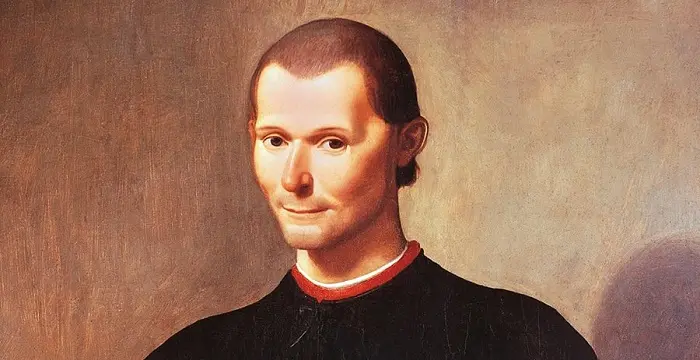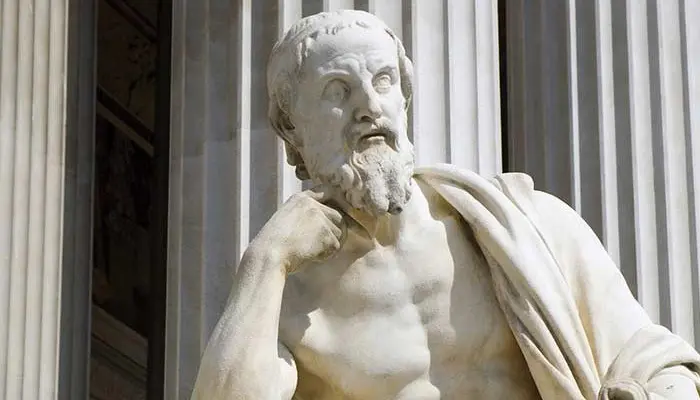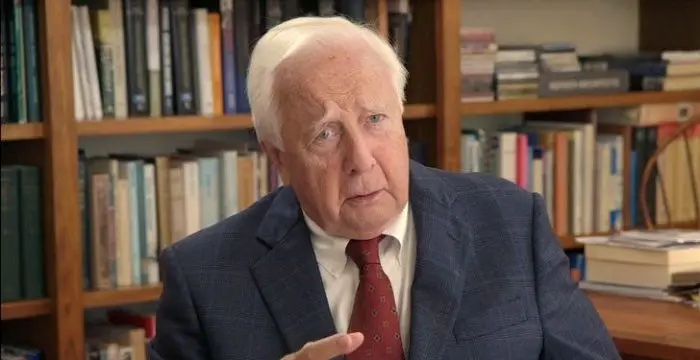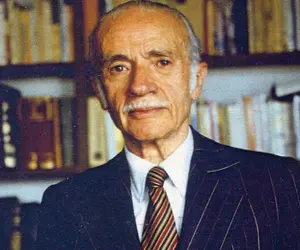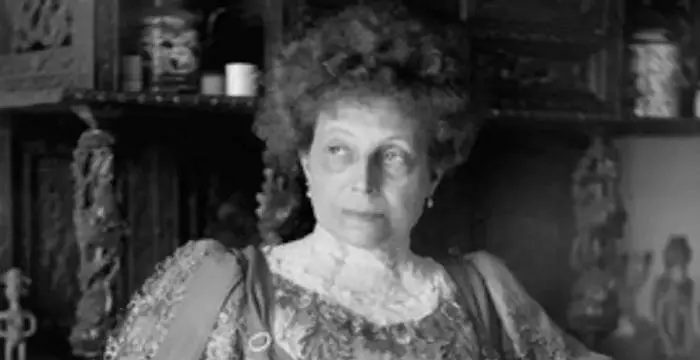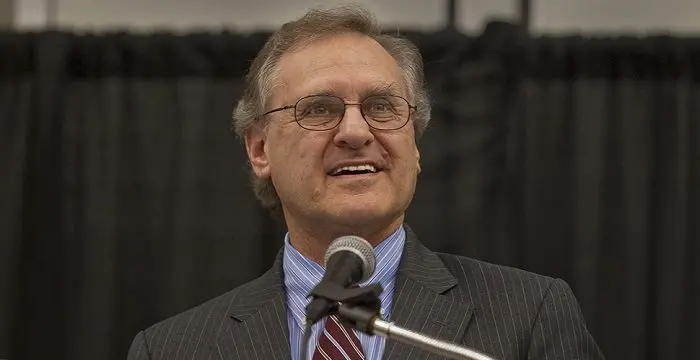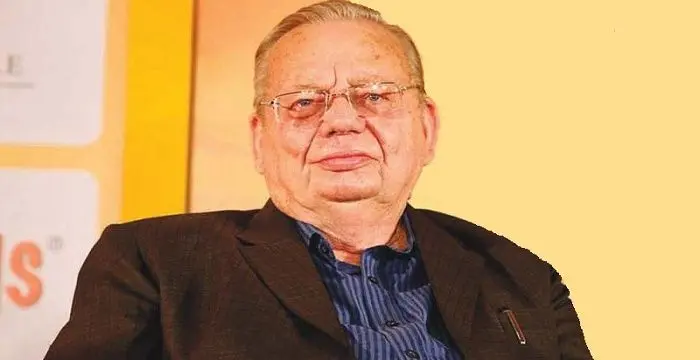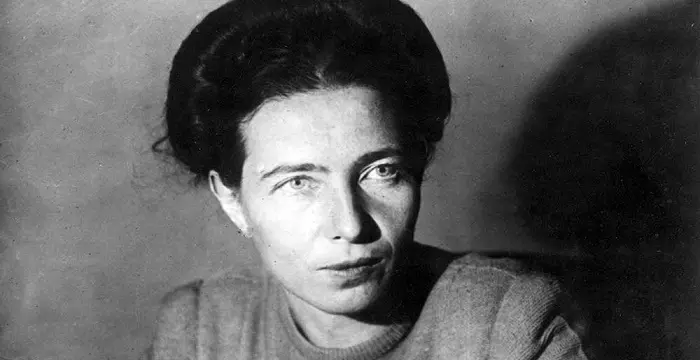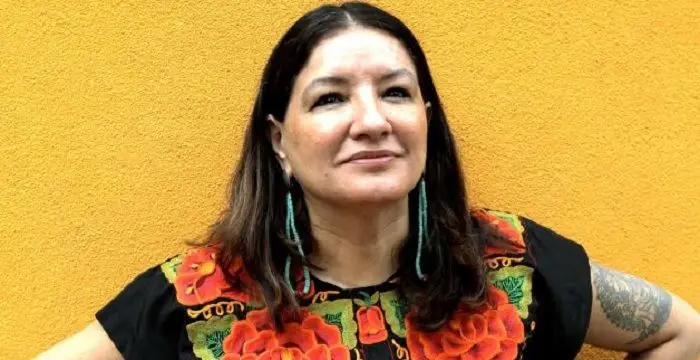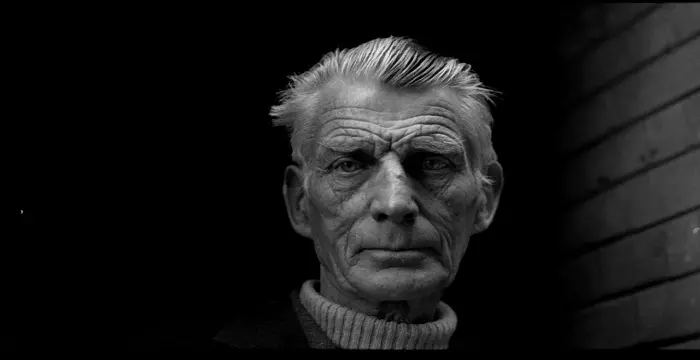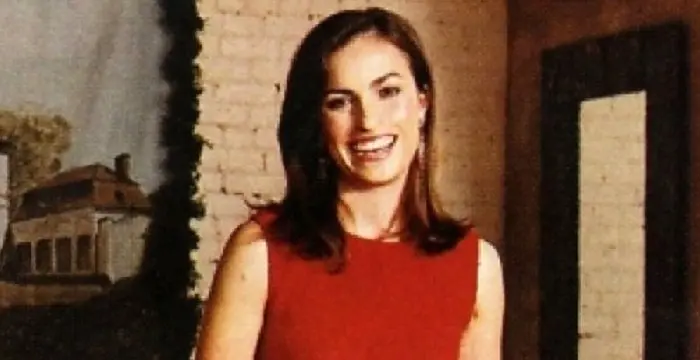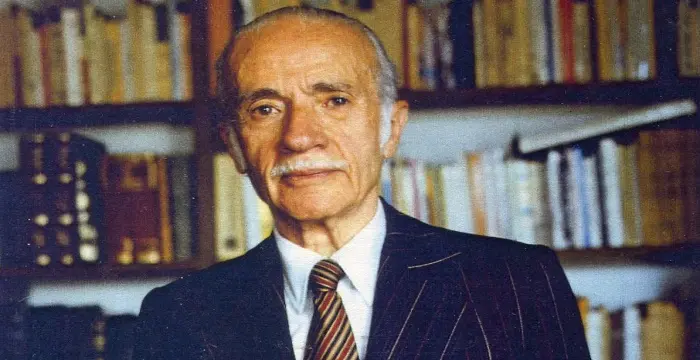
Alfredo Pareja Diezcanseco - Novelists, Family and Childhood
Alfredo Pareja Diezcanseco's Personal Details
Alfredo Pareja Diezcanseco was an Ecuadorian writer, best known for his work as a novelist, essayist and journalist
| Information | Detail |
|---|---|
| Birthday | October 12, 1908 |
| Died on | May 1, 1993 |
| Nationality | Ecuadorian |
| Famous | Intellectuals & Academics, Historians, Novelists, Non-Fiction Writers, Essayists, Diplomats |
| Known as | Alfredo Pareja-Diezcanseco, Alfredo Pareja y Diez Canseco, Alfredo Pareja Diez-Canseco |
| Birth Place | Guayaquil, Ecuador |
| Gender | Male |
| Sun Sign | Libra |
| Born in | Guayaquil, Ecuador |
| Famous as | Novelist, Essayist, Historian |
| Died at Age | 84 |
// Famous Historians
Niccolò Machiavelli
Niccolo Machiavelli was an Italian politician, historian and philosopher who is widely known as a founder of modern political science.
Herodotus
Herodotus was a Greek historian widely referred to as 'The Father of History'. This biography of Herodotus provides detailed information about his childhood, life, achievements, works & timeline.
David McCullough
David McCullough, known as the ‘master of the art of narrative history’, is an American author, narrator, historian and lecturer. Check out this biography to get detailed information on his life.
Alfredo Pareja Diezcanseco's photo
Who is Alfredo Pareja Diezcanseco?
Alfredo Pareja Diezcanseco was an Ecuadorian writer, best known for his work as a novelist, essayist and journalist. His work also touched on the spheres of history and political science, with Pareja working as both an historian and a diplomat in addition to his primary work as a writer. He is seen as one of the founding fathers of a major 20th century Latin American movement, the so-called ‘Grupo de Guayaquil’. In recognition of his literary work, he received recognition from numerous literary societies, universities and cultural organizations as well as his own government. Pareja’s work has been connected to the work of others from the ‘Guayaquil Group’, such as José de la Cuadra, Joaquin Gallegos Lara, Demetrio Aguilera Malta and Enrique Gil Gilbert. In addition, critics have likened his work to that of other Latin American literary greats, such as Jorge Luis Borges, John Dos Passos and Julio Cortázar. He maintained personal connections with other major writers of his era, including a long-time correspondence with John Steinbeck. Aside from his prominence within the literary world, he held posts at several universities in Latin America and North America, lecturing in the departments of literature, politics and history.
// Famous Diplomats
Gertrude Bell
Gertrude Bell was an English writer and diplomat, who was highly influential in helping the British Empire exert its dominance in the Middle East. Check out this biography to know about her childhood, family life, achievements and fun facts about her
Stephen Lewis
Stephen Lewis is a Canadian politician, broadcaster, diplomat and professor. This biography profiles his childhood, career, works, life, achievements and timeline.
Niccolò Machiavelli
Niccolo Machiavelli was an Italian politician, historian and philosopher who is widely known as a founder of modern political science.
Childhood & Early Life
Alfredo Pareja was born on 12 October 1908 in Guayaquil, Equador, to Fernando Pareja y Pareja and Amalia Diez-Canseco y Coloma, grandchild of the former Peruvian President Francisco Diez Canseco y Corbacho.
From the age of 14, Pareja helped support his family by working at the Colegio Vicente Rocafuerte, a local high school.
His education began in his hometown at the Colegio San Luis Gonzaga, a religious school of the Congregation of Christian Brothers, a Roman Catholic order.
Career
At the age of 22, he left his home for the United States. There, he took an assortment of jobs, including a stint on the New York docks.
On returning to Ecuador, he entered the field of academics with a position at the Universidad Laica Vicente Rocafuerte de Guayaquil as a professor of history, Spanish and American literature.
During the same period, he also took a post as superintendent in Guayas Province, where he was responsible for Secondary Education across the entire province.
Between 1935 and 1937, during a temporary exile in Chile, he briefly worked in the publishing industry at the Ercilla Publishing House.
In 1937, as the dictator Paez was replaced by President Aurelio Mosquera Narvaez, Pareja was able to return to Ecuador and to serve as a member of the Assembly.
In 1944, he become Ecuador’s chargé d'affaires to Mexico, a post he held for just one year before being appointed as a special representative for the UNRRA (United Nations Relief and Rehabilitation Administration) in Washington, D.C., Montevideo and Buenos Aires. As a special representative for the United Nations organization, he variously represented the interests of Mexico, Central America, Argentina, Uruguay and Paraguay.
In August 1979, he was appointed as the Ecaudorian Minister of Foreign Affairs, a post he held for just under a year, until July 1980.
In 1983, during the administration of President Osvaldo Hurtado, Pareja became a Permanent Delegate to UNESCO as well as the Ecuadorian Ambassador to Paris. Although the title was “permanent”, Pareja actually held the post for only one year, before his retirement.
Major Works
In 1933, he wrote ‘El muelle’ (‘The Pier’), a novel based on his experiences working on the docks of New York during the Great Depression.
In 1944, his novel-biography ‘The Barbaric Bonfire’ depicted the life and death of General Eloy Alfaro. The work extended Pareja’s fame within Ecuador to a worldwide level.
In 1944, he published the novel ‘Las tres ratas’ (‘The three rats’), a novel noted for its realism and its depiction of contemporary Ecuador. The novel would be made into an Argentine film just two years later.
Awards & Achievements
In 1994, he was given the Medalla de la Fundación Internacional Eloy Alfaro La Habana for his literary work to date, including ‘El muelle’, ‘Hombres sin tiempo’ and ‘Las tres ratas’.
In 1972, the ‘Medalla al Mérito Literario Municipio de Guayaquil’ was awarded to him for his exceptional accomplishments as a Guayaquil-born writer.
In 1979, he received the Eugenio Espejo National Award, the highest literary honor in Ecuador, from his life’s work in letters.
In 1992, in recognition of his work presiding over the Bicentennial of the French Revolution Committee, Pareja was awarded the Légion d'honneur, a notable distinction as it is typically awarded only to French nationals.
Given his work in diplomacy as well as letters, he received numerous accolades and honors from various countries, both Spanish-speaking and others. These recognitions included the Gran Cruz de la Orden al Mérito del Ecuador and the Gran Oficial de la Orden al Mérito del Ecuador (both from his native country); the Gran Cruz de la Orden de Isabela la Católica (from Spain), the Grand Croix de Order of the Crown (from Belgium) and the Gran Cruz de la Order of the Sun (from Peru).
Personal Life & Legacy
Pareja married his cousin, Mercedes Cucalón Concha in 1934. His wife was the niece of Carlos Concha Torres, a famous Equadorian colonel.
Together with his wife, Mercedes, he fathered three children: Cecilia, Jorge and Francisco.
During the dictatorship of Federico Paez, Pareja was incarcerated and eventually exiled (1935-1937). Upon his exile, Pareja fled to Chile.
On 1 May 1993, Pareja died in Quito after a quiet retirement, during which he immersed himself in historical research.
Pareja’s legacy of excellence in the arts was carried on by his son-in-law, Gerard Béhague, a noted ethnomusicologist.
Trivia
Following the Second World War, he collaborated with the Equadorian President Galo Plaza Lasso on various educational projects, not only in Central and South American countries, but also elsewhere around the world.
// Famous Intellectuals & Academics
Bertil Gotthard Ohlin
Bertil Gotthard Ohlin was a famous Swedish economist. This biography profiles his childhood, family life & achievements.
Emily Greene Balch
Emily Greene Balch was an American economist, sociologist and pacifist who won the 1946 Nobel Peace Prize. This biography of Emily Greene Balch provides detailed information about her childhood, life, achievements, works & timeline.
Martin Buber
One of the greatest philosophers to have ever walked on earth, Martin Buber contributions to philosophy is a long-standing one. Explore all about his profile, childhood, life and timeline here.
Alfredo Pareja Diezcanseco biography timelines
- // 12th Oct 1908Alfredo Pareja was born on 12 October 1908 in Guayaquil, Equador, to Fernando Pareja y Pareja and Amalia Diez-Canseco y Coloma, grandchild of the former Peruvian President Francisco Diez Canseco y Corbacho.
- // 1930At the age of 22, he left his home for the United States. There, he took an assortment of jobs, including a stint on the New York docks.
- // 1933In 1933, he wrote ‘El muelle’ (‘The Pier’), a novel based on his experiences working on the docks of New York during the Great Depression.
- // 1934Pareja married his cousin, Mercedes Cucalón Concha in 1934. His wife was the niece of Carlos Concha Torres, a famous Equadorian colonel.
- // 1935 To 1937Between 1935 and 1937, during a temporary exile in Chile, he briefly worked in the publishing industry at the Ercilla Publishing House.
- // 1935 To 1937During the dictatorship of Federico Paez, Pareja was incarcerated and eventually exiled (1935-1937). Upon his exile, Pareja fled to Chile.
- // 1937In 1937, as the dictator Paez was replaced by President Aurelio Mosquera Narvaez, Pareja was able to return to Ecuador and to serve as a member of the Assembly.
- // 1944In 1944, he become Ecuador’s chargé d'affaires to Mexico, a post he held for just one year before being appointed as a special representative for the UNRRA (United Nations Relief and Rehabilitation Administration) in Washington, D.C., Montevideo and Buenos Aires. As a special representative for the United Nations organization, he variously represented the interests of Mexico, Central America, Argentina, Uruguay and Paraguay.
- // 1944In 1944, his novel-biography ‘The Barbaric Bonfire’ depicted the life and death of General Eloy Alfaro. The work extended Pareja’s fame within Ecuador to a worldwide level.
- // 1944In 1944, he published the novel ‘Las tres ratas’ (‘The three rats’), a novel noted for its realism and its depiction of contemporary Ecuador. The novel would be made into an Argentine film just two years later.
- // 1972In 1972, the ‘Medalla al Mérito Literario Municipio de Guayaquil’ was awarded to him for his exceptional accomplishments as a Guayaquil-born writer.
- // 1979In 1979, he received the Eugenio Espejo National Award, the highest literary honor in Ecuador, from his life’s work in letters.
- // Aug 1979 To Jul 1980In August 1979, he was appointed as the Ecaudorian Minister of Foreign Affairs, a post he held for just under a year, until July 1980.
- // 1983In 1983, during the administration of President Osvaldo Hurtado, Pareja became a Permanent Delegate to UNESCO as well as the Ecuadorian Ambassador to Paris. Although the title was “permanent”, Pareja actually held the post for only one year, before his retirement.
- // 1992In 1992, in recognition of his work presiding over the Bicentennial of the French Revolution Committee, Pareja was awarded the Légion d'honneur, a notable distinction as it is typically awarded only to French nationals.
- // 1st May 1993On 1 May 1993, Pareja died in Quito after a quiet retirement, during which he immersed himself in historical research.
- // 1994In 1994, he was given the Medalla de la Fundación Internacional Eloy Alfaro La Habana for his literary work to date, including ‘El muelle’, ‘Hombres sin tiempo’ and ‘Las tres ratas’.
// Famous Essayists
Ruskin Bond
Ruskin Bond is an award winning Indian author of British descent. This biography of Ruskin Bond provides detailed information about his childhood, life, achievements, works & timeline.
Simone de Beauvoir
Simone de Beauvoir was an eminent French writer, intellectual, activist, and philosopher. This biography profiles her childhood, life, thoughts, achievements and timeline.
Sandra Cisneros
Sandra Cisneros is an American writer known for audaciously penning the realities and expectations from females in US and Mexico. This biography provides detailed information about her childhood, life, achievements, works & timeline
Samuel Beckett
Samuel Beckett was an Irish playwright, novelist, theatre director and poet. This biography profiles his childhood, life, works, achievements and timeline
Lisa Brennan-Jobs
Check out all that you wanted to know about Lisa Brennan-Jobs, Steve Jobs’ daughter; her birthday, her family and personal life, fun trivia facts and more.
Robert Louis Stevenson
Robert Louis Stevenson was a famous Scottish poet, novelist and travel writer. This biography profiles his childhood, career, life, achievements, trivia and timeline.
Alfredo Pareja Diezcanseco's FAQ
What is Alfredo Pareja Diezcanseco birthday?
Alfredo Pareja Diezcanseco was born at 1908-10-12
When was Alfredo Pareja Diezcanseco died?
Alfredo Pareja Diezcanseco was died at 1993-05-01
Where was Alfredo Pareja Diezcanseco died?
Alfredo Pareja Diezcanseco was died in Quito, Ecuador
Which age was Alfredo Pareja Diezcanseco died?
Alfredo Pareja Diezcanseco was died at age 84
Where is Alfredo Pareja Diezcanseco's birth place?
Alfredo Pareja Diezcanseco was born in Guayaquil, Ecuador
What is Alfredo Pareja Diezcanseco nationalities?
Alfredo Pareja Diezcanseco's nationalities is Ecuadorian
What is Alfredo Pareja Diezcanseco's sun sign?
Alfredo Pareja Diezcanseco is Libra
How famous is Alfredo Pareja Diezcanseco?
Alfredo Pareja Diezcanseco is famouse as Novelist, Essayist, Historian
